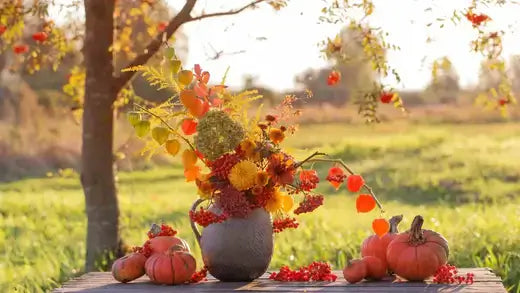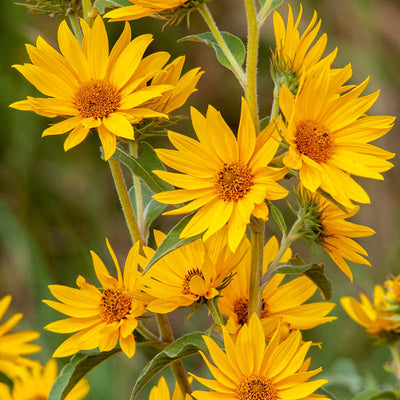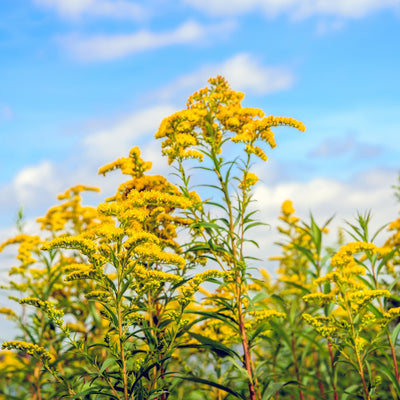The Symbolism of Autumn Flowers: A Colorful Celebration of the Season
With its crisp air and vibrant foliage, autumn is a season of profound beauty and transition. While the summer heat gives way to cooler temperatures, nature transforms into a mesmerizing display of colors, textures, and fragrances.
Throughout history, people have sought to capture and convey the essence of autumn through various forms of art, poetry, and symbolism.
One of the most enchanting ways to do so is through flowers. While spring is often associated with the rebirth of life and a burst of floral abundance, autumn brings a different kind of floral magic.
In this season, certain flowers take center stage, embodying autumn's unique character and symbolism. These flowers are more than just botanical specimens; they are living symbols reflecting this transitional season's spirit and beauty.
In exploring the symbolism of autumn flowers, we will delve into the fascinating world of these blossoms, uncovering their historical, cultural, and emotional significance.
From the fiery hues of marigolds to the delicate elegance of chrysanthemums, each autumn flower carries its message and charm. Together, they draw a rich and complex portrait of the season, offering a deeper appreciation of the fleeting beauty of autumn.
Marigolds: The Flame of Autumn Marigolds, known scientifically as Tagetes, are among the most iconic and widely recognized autumn flowers. These fiery blossoms are characterized by their warm hues, ranging from vibrant oranges to deep reds and yellows. Their appearance mirrors the transformation of autumn leaves as they turn from green to brilliant shades of red and gold.
Marigolds have a long history of cultural and symbolic significance. In various cultures worldwide, marigolds are associated with warmth, passion, and protection themes.
They have been used in religious ceremonies, festivals, and rituals to honor deities and ancestors. One of the most well-known uses of marigolds is in Mexico's Dia de los Muertos, or Day of the Dead, celebration. During this annual event, marigold petals create intricate and colorful floral altars, known as ofrendas, to honor deceased loved ones.
The vibrant hues of marigolds are believed to guide the spirits of the departed back to the world of the living. Beyond their cultural significance, marigolds also hold a practical role in the garden. They are known for repelling insects and pests, making them a valuable companion plant for other crops. In this way, marigolds symbolize the fiery spirit of autumn and serve as protectors of the garden.
Chrysanthemums: Elegance in Abundance Chrysanthemums, commonly called "mums," are another quintessential autumn flower. These flowers are prized for their stunning blooms and come in a wide range of colors, including white, yellow, pink, and lavender.
Chrysanthemums are characterized by their intricate, daisy-like petals and a captivating fragrance. The symbolism of chrysanthemums is deeply rooted in Eastern cultures, particularly in Japan and China. In Japan, chrysanthemums are associated with the imperial family and the emperor himself, and they are often used as the country's emblem.
The Chrysanthemum Throne is the name given to the Japanese imperial throne, emphasizing the flower's importance in the country's history and culture. Chrysanthemums are also linked to themes of longevity and immortality in Chinese culture. The name "chrysanthemum" is derived from the Greek words "chrysos," meaning gold, and "anthemon," meaning flower.
This golden flower was believed to have life-extending properties, and its essence was used in traditional Chinese medicine. In the language of flowers, chrysanthemums convey messages of fidelity, optimism, and joy.
They are often given as gifts during autumn festivals and celebrations, symbolizing good fortune and well-wishes for the future. Chrysanthemum festivals are held in various parts of the world, showcasing these blossoms in all their glory.
In both Eastern and Western cultures, chrysanthemums are seen as a symbol of the autumn season.
Their full and abundant blooms mirror the season's harvest bounty, making them a fitting representation of autumn's abundance and prosperity. Asters: Stars of the Season Asters, aptly named after the Greek word for "star," are delicate and charming flowers that grace gardens and landscapes during the autumn months.
These daisy-like blossoms are known for their vibrant colors, including purple, blue, pink, and white shades. Asters are beloved for their simplicity and ability to attract butterflies, bees, and other pollinators.
The symbolism of asters is closely tied to themes of love, patience, and elegance. In ancient Greek mythology, asters were associated with the goddess Astraea, who personified innocence and purity. According to legend, Astraea became the constellation Virgo, and the stardust from her robe scattered across the Earth, creating asters. In Victorian flower language, asters conveyed a message of love and admiration. Giving someone a bouquet of asters was seen as a way to express your feelings of devotion and patience.
The small, star-shaped blooms were also believed to carry a wish for well-being and good fortune. Asters are often used in floral arrangements and bouquets for autumn weddings and other special occasions. Their dainty appearance and vibrant colors add elegance and charm to any floral display. Whether used as a standalone bloom or combined with other autumn flowers, asters bring a sense of delicacy and beauty to the season.
Sunflowers: A Beacon of Hope Sunflowers, with their bright and cheerful appearance, are one of the most recognizable flowers associated with autumn. These towering beauties are known for their large, golden-yellow petals and prominent brown centers.
Sunflowers are visually stunning and carry a powerful message of hope and optimism.
The symbolism of sunflowers is deeply rooted in their ability to follow the sun over the day, a phenomenon known as heliotropism. This behavior is seen as a symbol of devotion, loyalty, and unwavering faith. Sunflowers are often associated with the sun, representing warmth, positivity, and the promise of a new day. In art and literature, sunflowers have been celebrated for their ability to uplift and inspire.
Vincent van Gogh, the famous Dutch painter, created a series of paintings featuring sunflowers, capturing their radiant beauty and the emotions they evoke. These paintings are not only masterpieces of art but also a testament to the profound impact sunflowers have on the human spirit.
Sunflowers are a popular choice for autumn floral arrangements and decorations. Their vibrant color and symbolism of hope make them a fitting choice for weddings, festivals, and other joyful occasions. A bouquet of sunflowers can brighten even the gloomiest of autumn days, reminding us of the light that can be found even during change and transition.
Goldenrod: A Beacon of Light Goldenrod is a striking and vibrant wildflower that blooms in the late summer and early autumn. Its tall, slender stems are adorned with clusters of small, bright yellow flowers, creating a dazzling display.
Goldenrod is often found in fields, meadows, and along roadsides, adding a touch of brilliance to the autumn landscape.



